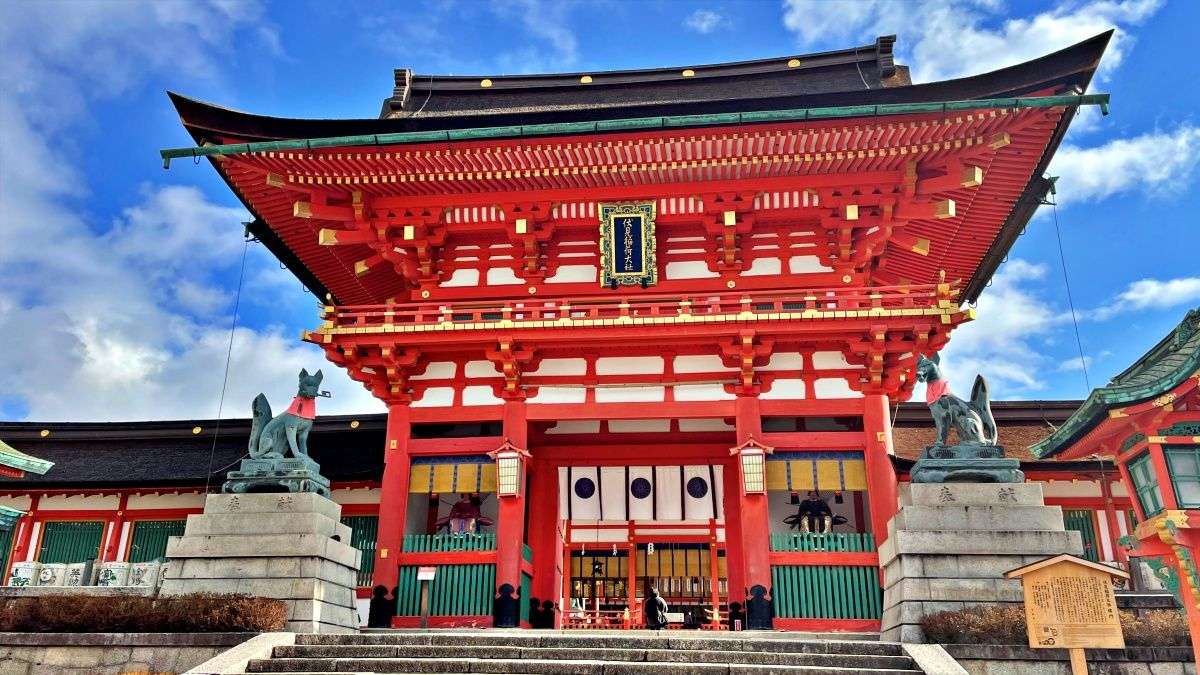Language:Jpanese
The first building that catches your eye when you visit Fushimi Inari Taisha Shrine is the Romon Gate.
This time, I will introduce the Romon Gate of Fushimi Inari Taisha Shrine.
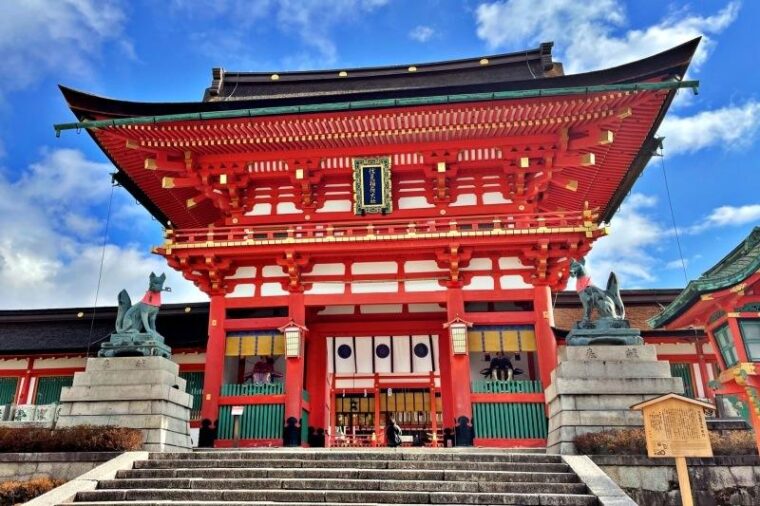
Fushimi Inari Taisha Shrine “Romon” (Important Cultural Property), Kyoto
Built: 1589 (Tensho 17)
Structure: Sangen Ikko (Three rooms, one door) Irimoya-zukuri (gambrel) Hiwadabuki (cypress bark roofing)
History
This tower gate was built in June 1588 (Tensho 16) by Toyotomi Hideyoshi at Fushimi Inari Taisha Shrine to pray for the recovery of his mother, Omandokoro. Then, in 1589 (Taisho 17), it was revived with the Honpuku-onrei ceremony.
Later, in 1694 (Genroku 7), when the shrine building was expanded, it was moved approximately 9 meters to the west, and stone steps were built in front.
At that time, the roof was made of wood, but in 1881 (Meiji 14) it was changed to cypress bark, and in 1974 it was dismantled and repaired to give it its current appearance.
A petition begging for life
Legend has it that a “prayer for life” written by Hideyoshi’s mother, “I will donate 10,000 koku if Omandokono-dono’s prayer for healing from his illness is fulfilled,” was written on this gate. But, there were doubts about the consistency between the construction tradition and traditional documents.
However, when the temple was dismantled and repaired in 1974, an ink calligraphy dated 1589, the same year as the petition, was discovered, and the legend was confirmed to be correct.
Roumon(楼門)
The word “rou(楼)” in Roumon(楼門) has the meaning of “a high building” or “a two-story building,” and is used before and after the names of tall buildings such as korou(高楼), roukaku(楼閣), and roumon(楼門).
As the name suggests, “mon(門)” refers to the entrance, and at the entrance to shrines and temples there is “sanmon(三門)” or “romon(楼門).”
The combination of these words “rou(楼)” and “mon(門)” is called romon(), which means a two-story gate.
There are two types of gates: multi-layered and single-layered. In early modern times, multi-layered gates were called “romon” or “sanmon.” Recently, a multi-layered gate without a roof on the lower layer is called a “romon”, and a gate with a roof on the upper and lower layers is called a “double gate”.
Zuishinzo (Sadaijin and Udaijin)
On the left and right sides of the tower gate, there are life-sized statues called “Zuishinzo.”
A zuishin is a person who was ordered by the imperial court during the Heian period to protect a nobleman, and in modern terms, it can be said to be a bodyguard who protects important government officials.
The person on the left is called “Sadaijin(Minister of the Left)” and the person on the right is “Udaijin(Minister of the Right).”
The Minister of the Left, who is dressed in black, is said to be an elderly man who controls wisdom, while the Minister of the Right, who is dressed in red, is said to be a young man who controls power.
In Japanese Shinto, there are many shrines where “Zuishin” are enshrined as guardians of the gods, and Fushimi Inari Taisha Shrine also protects the gods at the tower gate.
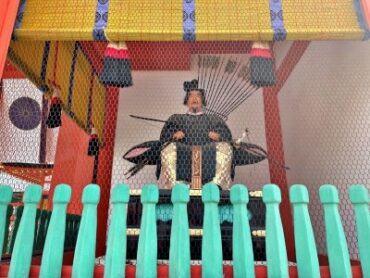
Sadaijin

Udaizin
The rank of Minister of the Right and Minister of the Left
A long time ago, Emperor Suiko and Prince Shotoku established colors for the 12th rank of official positions and ranks. “Black” is the costume for people of rank 4 and above, called “Tsurubami,” and “red” is the costume for people of rank 5 and below, called “Suou.” Therefore, the Minister of the Left, a doll dressed in black, is considered to be of high rank.
Komagitsune
In front of the Roumon Gate, there are not guardian dogs but guardian foxes, which are the symbols of Inari Taisha Shrine, placed on the left and right.
The fox on the north side (to the right when facing the tower gate) has a “Key” in its mouth, and the fox on the south side (to the left when facing the tower gate) has a “Tama'(Ball)’ in its mouth.
At Fushimi Inari Taisha Shrine, there is something called “Gyokukenshinko,” which worships a ball and a key.
The “Tama(Ball)” represents the spiritual virtue of Inari Okami, and the “Key” represents the desire to acquire that spiritual virtue. The jewel ball and the key are said to represent the principle that all things, such as yin and yang, heaven and earth, grow and grow through two functions.
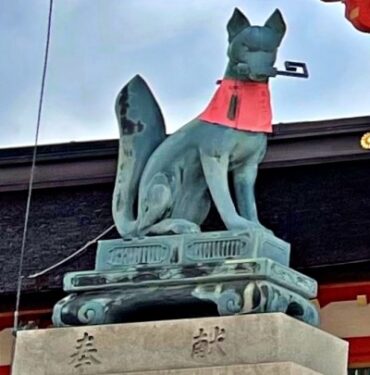
Left guardian foxe
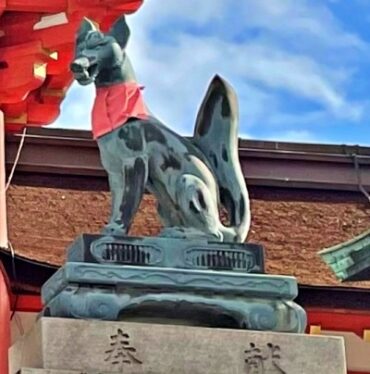
Right guardian foxe

